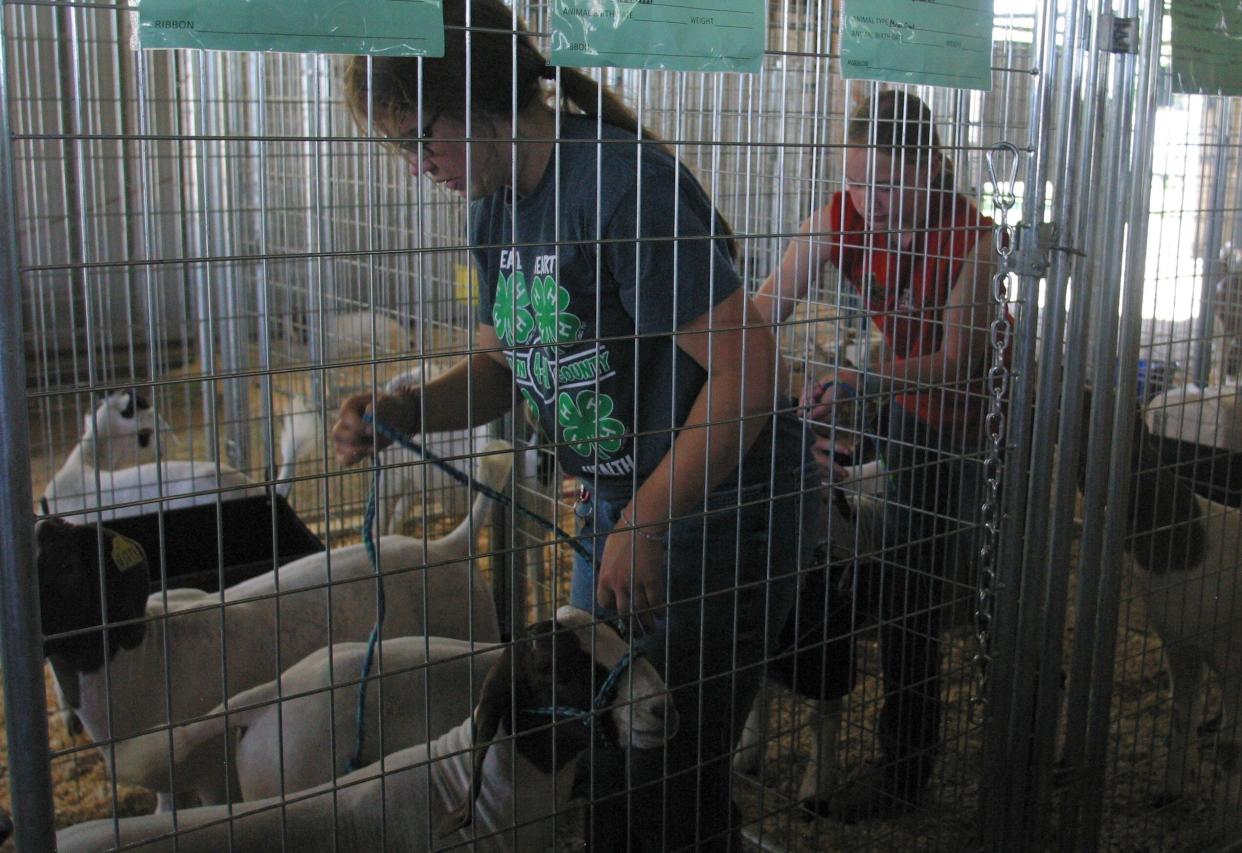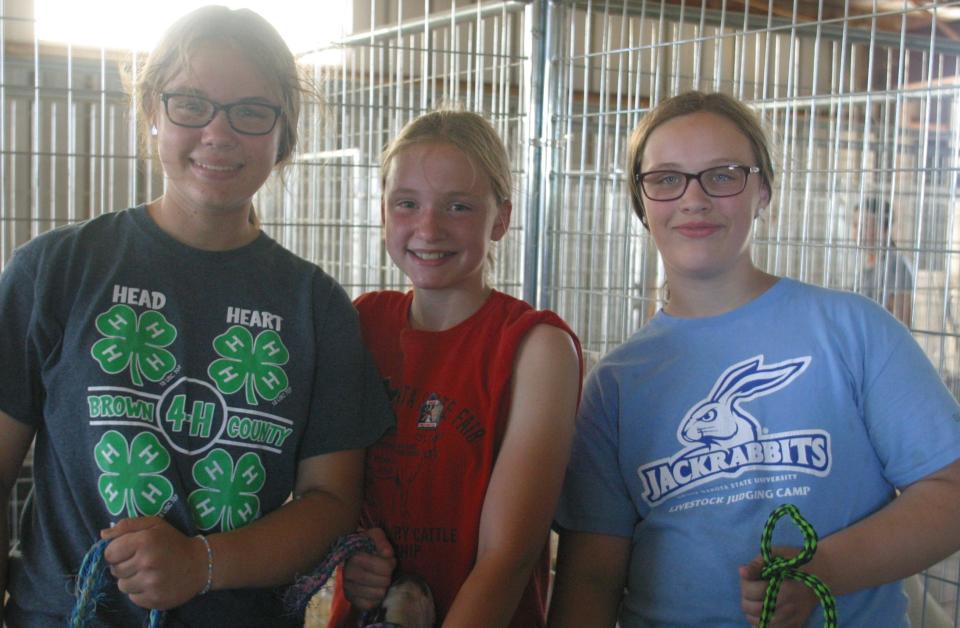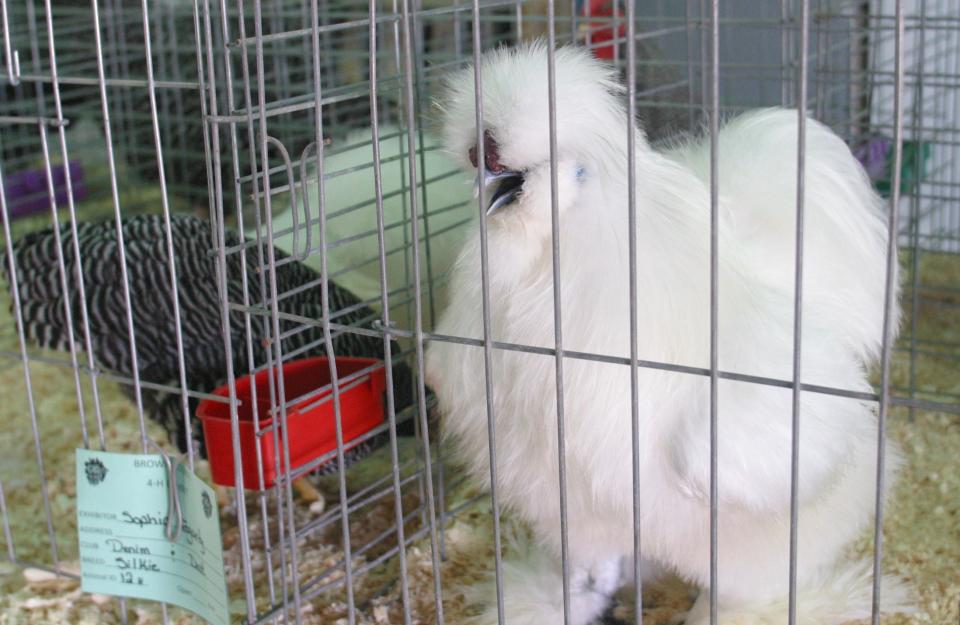What do judges hope to see when looking at animal entries? 4-H'ers offer insight.

The 4-H activities and animal shows are a big part of the Brown County Fair.
But those who haven't grown up in 4-H might leave a livestock show wondering just what the judges are looking for.
Four 4-H'ers sat down with the American News this week to share what they've learned showing poultry, dairy goats and meat goats.
Sophia Fogarty, 16, is showing both poultry and dairy goats this year. She said part of the preparation during fair week is clipping, which involves trimming the hair to accentuate specific parts of the goat to impress the judge.
As a dairy goat entrant, Fogarty said she's also participating in a new optional milking contest. Depending on the amount of milk produced, she said, a goat can receive a milk star that is added to its pedigree. She started preparing for that earlier this summer.
"I started milking three times a day to up milk production," Fogarty said.
More: The Brown County Fair is packed with visitors and action. Check out these photos of the fun
With six siblings in the house, she said drinking the milk isn't a problem. The taste from her Nigerian dwarf goats is comparable to cow's milk, only creamier and, because the molecules are smaller, it's easier to digest. She's also put some to use as an ingredient in ice cream, and her neighbor has used some to make other products.
Cousins work together to raise meat goats

Anna Johnson, 16, Ada Sharp, 12, and Abi Jo Johnson, 10, worked together getting their 11 meat goats ready to show. The goal, they said, is to have the Boer goats at a healthy weight for the fair and get them trained to be led while walking.
The weight and health of animals are important to judges.
Last year, Sharp said, she had the heaviest goat at state fair. This year, she said, the group has learned from that and, instead of feeding all the goats at once, each one is fed from its own container.
The type of feed has also changed from a bulk feed to a combination of bulk feed, protein supplements and oats.
At the fair, feeding the goats individually means making sure the animals can only reach the food intended for them. That also allows the girls to log how much each goat eats.
Of the 11 goats, they said, each has its own personality. In describing the goats, Sharp said they're curious, friendly, dramatic and sometimes stubborn.
More: 4-H grand champions from northeastern SD to be recognized Saturday at Brown County Fair
Judges also quiz 4-H'ers on knowledge of their animals
Fogarty shows a variety of poultry, but her favorite is the silkies.
"They look different," she said, noting that they're often described as a bunny crossed with a chicken.
Pre-fair preparation includes giving each fowl a bath and blow drying them to fluff out the feathers.
More: Here's everything you need to know about the 2022 Brown County Fair, from concerts to food
But the animal's condition is only part of what judges look for. They also test 4-H'er's knowledge of their animals.
"I've known my facts at (the state fair), but not placed as well," Fogarty said.
That's because the birds get dirty on the way to the state fair, she said..

Fogarty said a couple interesting facts about silkies is that they have five toes instead of four. They also have turquoise earlobes and their skin and meat is black. Young roosters can develop horns in the womb, she said, a condition that isn't wanted in a show animal.
Another key to showing poultry is having them the right age.
"With poultry you want them at least four months and not molting," she said.
Two of the silkies she's showing are about a year old.
To have them at the right age, Fogarty said, usually means buying the birds in January or February.
This article originally appeared on Aberdeen News: 4-H members test their skills with animals at Brown County Fair

